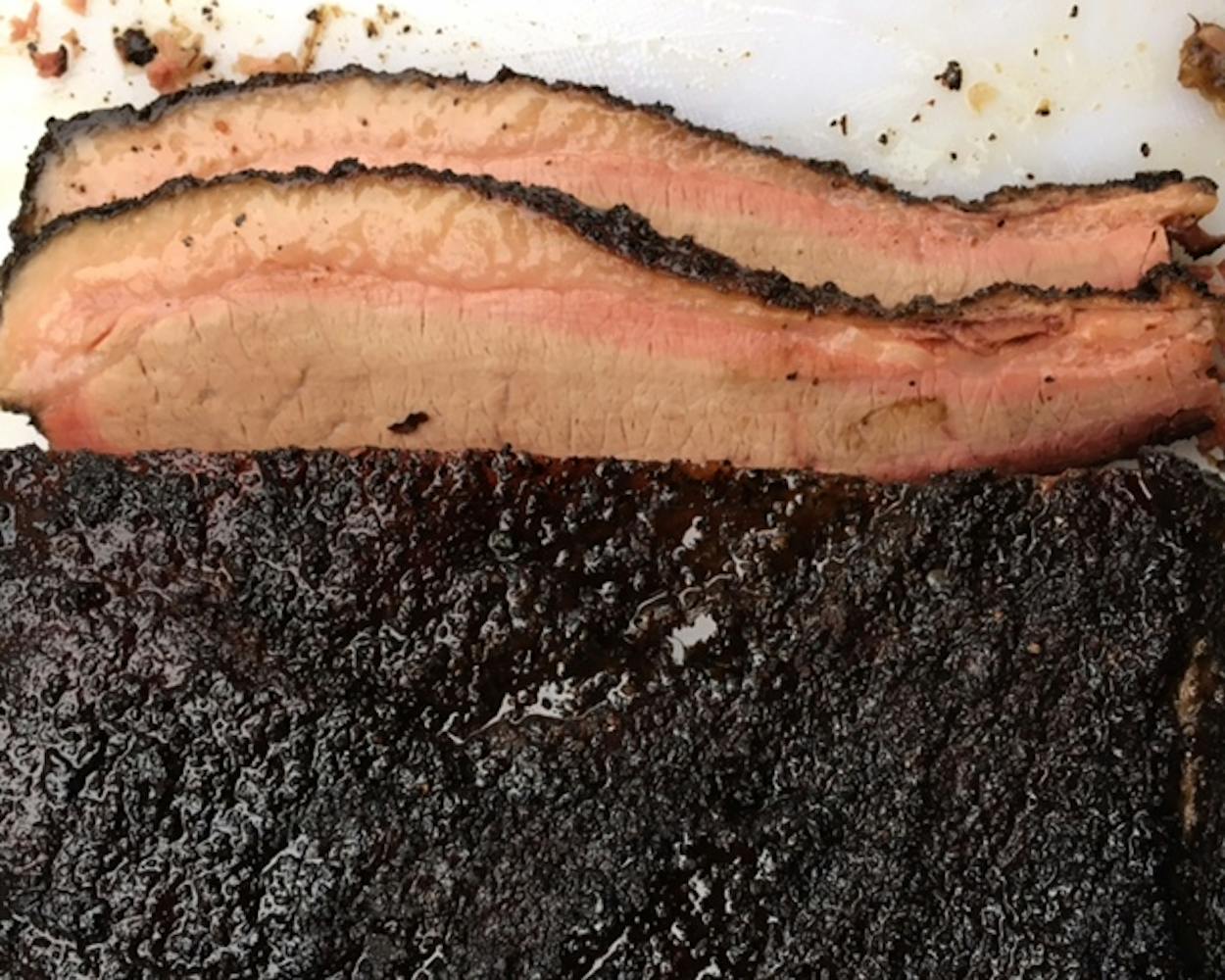Not all briskets are created equal. That much is obvious to anyone who’s had a great one—or a bad one. Those experiences are easy to contrast, but what about when it’s not a question of good or bad? When it’s a matter of simply being different?
I was struck by the variety in briskets during a recent barbecue road trip between Belton and Luling. As much as the barbecue changes across the state, we know the catch-all term of “Texas-style barbecue” is a false singularity. Not only does the wood vary, but so do the smokers, the cooking temperatures, and even the wrapping methods. This isn’t anything new, but tasting so many different briskets in a single day reminded me how tricky it can be to evaluate them on the same scale. The ruggedness of a hot and fast brisket that remained bareback on the pit versus the tenderness of a foil-wrapped hunk of beef is like comparing apples to briskets.
Understanding the method of cooking, its strengths, and its limitations, helps determine how closely a joint is hitting the target they’re aiming for. My first stop of the day was Schoepf’s Old Time Pit Bar-B-Que in Belton. Briskets here are cooked directly over mesquite coals in steels pits. This is the method commonly found in the Hill Country and West Texas. You may have heard that low-and-slow is the only way to cook a brisket, but direct-heat is most certainly a hot-and-fast approach. Temperatures easily reach 500 degrees, and the briskets can cook in as quickly as five or six hours. Given the extremes, briskets can easily dry out in these hot pits. That’s why foil is often employed in the cooking process. Pitmasters will let their brisket get the color and flavor from the smoke, then wrap them in foil (sometimes as early as one-third of the way into the cooking process) to create a moister cooking environment. This makes the final result juicier, but it’s also difficult to ever get the fatty point end of the brisket to tenderness using this method.
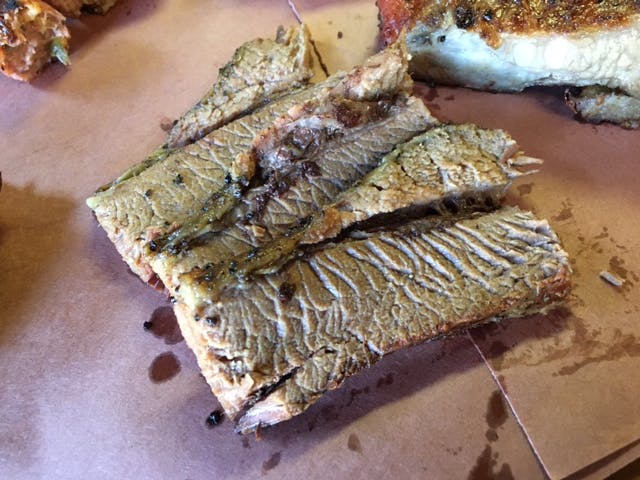
At Schoepf’s, the foil wrapping makes for a steamy environment which gets those briskets very tender with lots of retained moisture. That’s not a bad thing, but it does result in a brisket that seems more like pot roast.
For a different lesson in how to use foil (a.k.a. the Texas Crutch) look no further than Snow’s BBQ where the sliced beef remains juicy without tasting wet. It’s hard to find another example of great foil-wrapped brisket because of the rapid shift away from foil to butcher paper as a wrapping medium, but that’s a whole other subject.
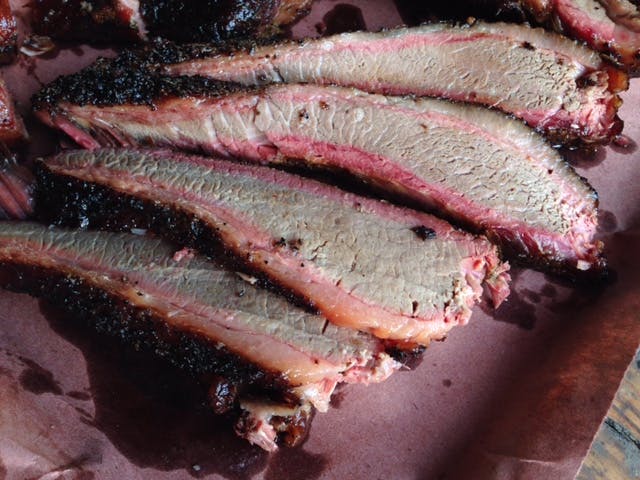
After leaving Schoepf’s, where the brisket could be cut with a spoon, I headed straight for Lockhart. The fires blazing out in the open beside hulking brick pits are part of the reason folks travel to Kreuz Market. The spaces where brisket is turned into barbecue—the pit rooms—are just as alluring as the food. It’s still indirect cooking, although they cook just as hot and fast as Schoepf’s. They don’t wrap their briskets at Kreuz. They bear the full brunt of that hot fire making for a hefty crust and a drier texture. Which means a juicy slice of brisket at Kreuz is a fleeting experience. The moisture leaves the brisket slices as soon as they hit the cutting black, so be sure to eat the brisket first.
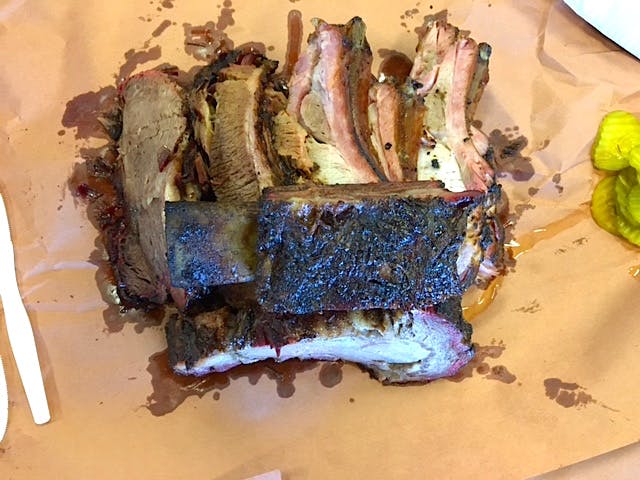
If you like thick bark and brisket fat that’s crunchy on the edges, you’ll like this style. For a low-and-slow counterpoint with similar flavors, a great option is oddly enough the second location of Kreuz Market in Bryan. They smoke it at a lower temp on steel offset smokers, and the brisket texture couldn’t be more different. It’s more consistently tender, juicier, and also has a more pronounced smokiness from simply being exposed to the smoke longer.
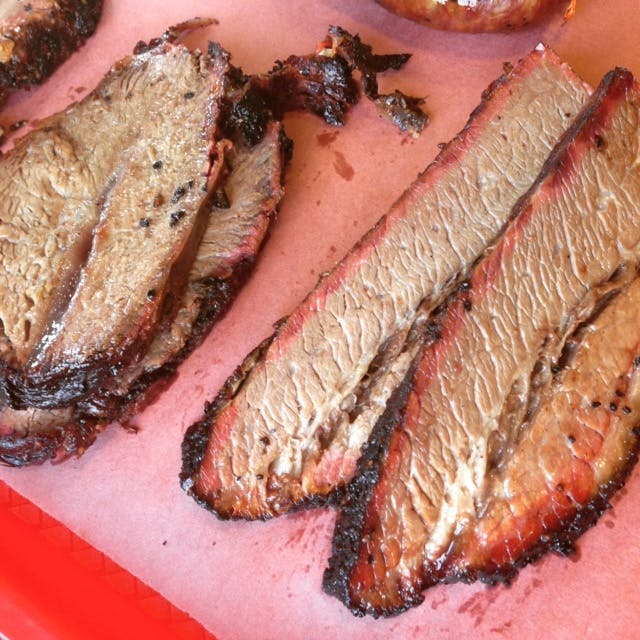
Smoke flavor isn’t a challenge on a gas-fired rotisserie as long as you keep feeding it wood. I know “rotisserie” sounds like a bad word, but more barbecue in Texas is cooked on these smokers than any other type, including at the storied City Market in Luling where I stopped after the feast in Lockhart. They have consistent and low heat, and require less effort than a stick burner. Cold briskets going into the smoker, and a thermostat-controlled 225-degree temperature make for impressive smoke rings, but often the smoke flavor can be stale. Pitmasters that use these smokers well can create smoky meat with a beautiful bark, and the low temperatures should make for juicy meat throughout. It’s hard to make a really terrible brisket in a rotisserie, but getting an exceptional one with this machine is a challenge. At City Market they do a fine job, but they could have used a few more go rounds on this day.
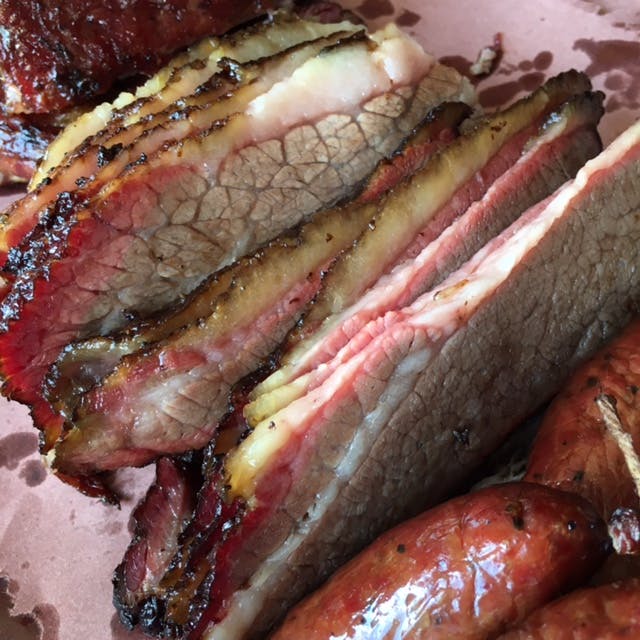
Low-and-slow cooking on an offset smoker brings about images of buttery meat dripping with juices. This style has spurred the worship of fatty brisket, and is the method most likely to be copied at Texas-style joints outside of Texas. Many smoke at around 225 for more than a half day. The upper end of the cooking temp in this category is about 275. The use of high quality brisket wrapped in butcher paper has become de rigueur for this Central Texas version of barbecue. Freedmen’s Bar in Austin, the final stop on my day long tour, hits all the notes on tenderness and smokiness, but bucks the butcher paper trend with boats of foil.
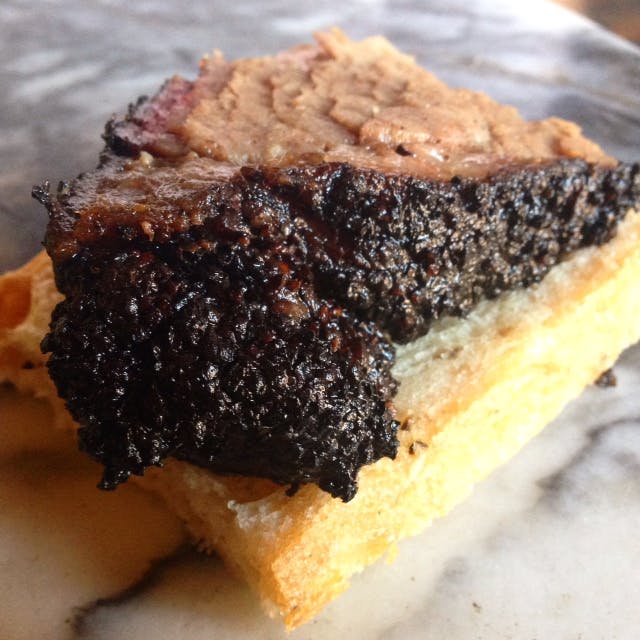
Freedmen’s offers a version of brisket familiar to those who love the hip and cool joints of Austin. This is meat that has been smoked slowly. The rendered fat is so soft it could be spread like butter, and the beef drips with juices. The bark is stouter than most because at Freedmen’s they don’t wrap the meat. Instead, pitmaster Evan LeRoy builds trays of foil for the briskets to sit in during the cooking process, but they aren’t covered. This captures the drippings without the pot roast texture. It’s a smoky brisket with a peppery kick, and it’s one of the best in the state. Okay, maybe it wasn’t so hard to pick a favorite from the trip.
Brisket might be the signature cut of barbecue in our fine state, but there are as many ways to smoke it as there are potato salad recipes in Texas. Not everyone is trying to replicate Franklin Barbecue, and offset stick burners aren’t the only way to a good brisket. There is not a single correct way to smoke brisket, and that’s why eating barbecue across Texas never gets dull.
- More About:
- Snow's BBQ
- Franklin Barbecue
- Brisket


